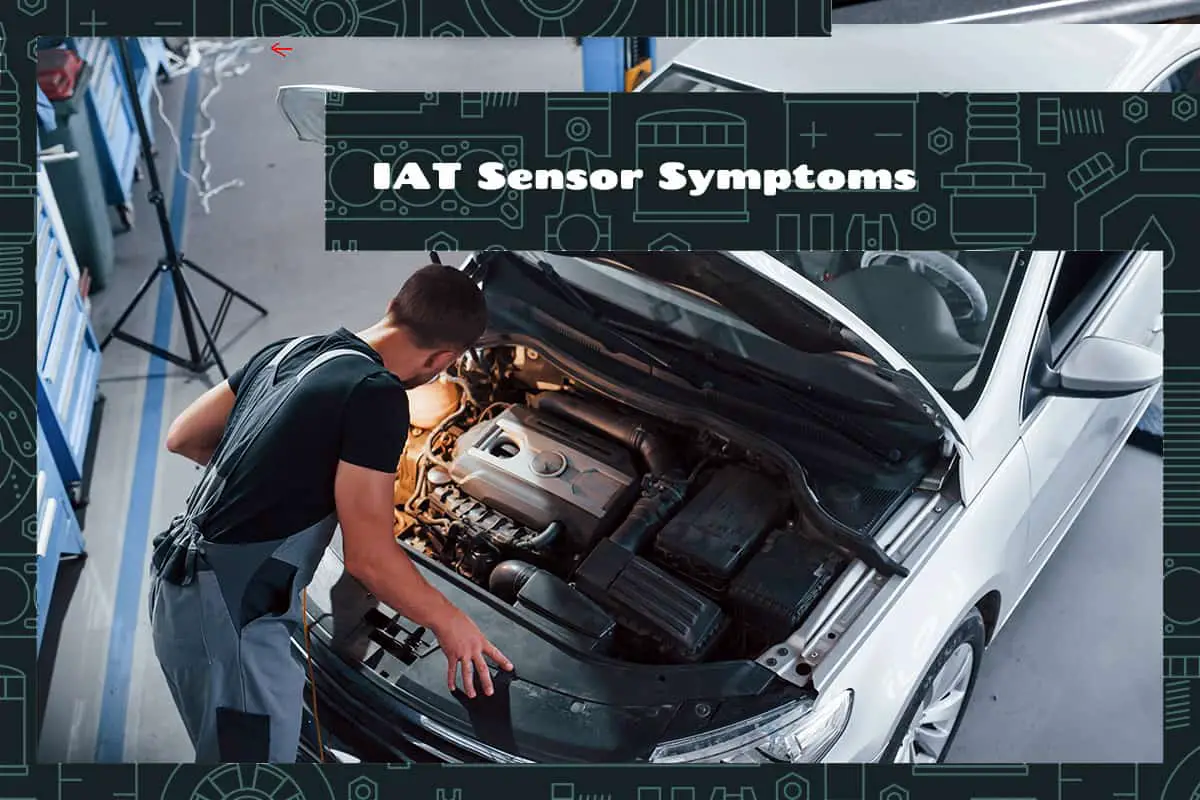When you ignite your car, there’s an intricate dance of parts and systems working together behind the scenes, crucial to your vehicle’s smooth and efficient operation. One such unseen hero is the Intake Air Temperature (IAT) sensor. This small but significant component plays a role in maintaining your car’s engine performance and fuel efficiency.
By measuring the temperature of the air entering the engine, the IAT sensor allows the engine’s computer to make necessary adjustments for optimal combustion.
Failing IAT sensors are often characterized by the following:
- Engine misfires or poor performance
- Unstable idle speed
- Higher fuel consumption
- Difficulty starting the car
- Illuminated check engine light
This guide aims to demystify IAT sensors and their symptoms when things go awry. We will explore their function, the symptoms of a failing sensor, and troubleshooting methods.
The Inner Workings of an IAT Sensor
At its core, an IAT sensor is a relatively simple device. It is typically a two-wire thermistor. A thermistor is a type of resistor, a component used to manage the flow of electric current. The resistance value of a thermistor changes with the temperature, making it a perfect candidate for temperature-sensing tasks.
The two main components of an IAT sensor are the thermistor and the electrical connector. The thermistor is enclosed in a weather-tight casing to protect it from the environment, and the electrical connector allows it to interface with the car’s onboard computer.
Let’s break down these components:
- The Thermistor: The thermistor is the temperature-sensing element in the IAT sensor. It’s a type of semiconductor that changes resistance with temperature fluctuations. As the air temperature increases, the thermistor’s resistance decreases, and vice versa.
- Electrical Connector: This part connects the IAT sensor to the engine control unit (ECU). It allows the sensor to send signals representing the intake air temperature to the ECU. The connector needs to be secure and clean for the sensor to work effectively.
How Does an IAT Sensor Function?
The IAT sensor’s functioning revolves around the principle of resistance and Ohm’s law. As the intake air’s temperature changes, the resistance of the thermistor inside the IAT sensor changes. The ECU sends a reference voltage to the IAT sensor, which returns a voltage signal depending on the resistance.
When the intake air is cold, the resistance in the thermistor is high, leading to a low return voltage. Conversely, hot air results in a low resistance and a higher return voltage.
The ECU uses this return voltage to calculate the exact temperature of the incoming air. This data is crucial for the ECU to determine the correct air-fuel mixture for combustion. An accurate mixture ensures optimal engine performance and fuel efficiency.
If the IAT sensor malfunctions and sends inaccurate temperature readings to the ECU, it can result in a rich or lean air-fuel mixture. A rich mixture means there’s more fuel than needed, which can lead to higher emissions and decreased fuel efficiency. A lean mixture, on the other hand, means there’s not enough fuel, which can lead to poor engine performance.
Identifying IAT Sensor Issues
Like any other component, IAT sensors are prone to wear and tear and can sometimes fail. Understanding the symptoms of a failing IAT sensor can help you address the problem before it affects your car’s performance or causes other damage.
1. Engine Misfires and Reduced Performance
When the IAT sensor starts malfunctioning, it may send incorrect air temperature readings to the ECU. In turn, it miscalculates the necessary air-fuel ratio for optimal combustion. This inaccurate air-fuel mixture can lead to engine misfires, where the engine runs unevenly or “misses” its firing sequence.
Further, a faulty IAT sensor can cause a noticeable drop in the car’s performance. You may find your car accelerating slowly, losing power during operation, or not responding as smoothly as before. These issues stem from the same cause: the incorrect air-fuel ratio due to erroneous IAT sensor readings.
2. Inconsistent Idle Speed
A car’s idle speed—the engine’s speed when the car is stationary with no throttle input—can be affected by a faulty IAT sensor. The IAT sensor’s readings help the ECU adjust the idle speed according to the air temperature. When the sensor malfunctions, it can lead to an erratic idle speed, causing the car to idle too fast or too slow, or fluctuate inconsistently.
3. Increased Fuel Consumption
If the sensor sends incorrect cooler temperature readings, the ECU compensates by adding more fuel to the air-fuel mixture, assuming the air is denser. This situation results in a rich air-fuel mixture, causing the engine to consume more fuel than necessary. If you notice a sudden decrease in your car’s miles per gallon (MPG), it could be a symptom of a failing IAT sensor.
4. Difficulty Starting Your Car
The IAT sensor helps the ECU adjust the air-fuel mixture depending on the intake air temperature. If the sensor provides inaccurate readings, it can lead to a mixture that’s not optimal for the current conditions, making it hard to start the car.
5. Check Engine Light
The ECU continuously monitors the IAT sensor’s performance. If it detects an issue, such as out-of-range readings or a lack of signal, it will trigger the check engine light. While a lit check engine light can indicate various issues, a diagnostic trouble code (DTC) reader can help you confirm if it’s related to the IAT sensor. One common IAT-related DTCs is P0113.
How to Replace a Malfunctioning IAT Sensor

If your vehicle’s IAT sensor is malfunctioning, you will need to replace it promptly to prevent engine damage and ensure optimal performance. This section provides a step-by-step guide on how to replace a faulty IAT sensor.
Diagnosing the IAT Sensor
Before you begin replacing the IAT sensor, it’s crucial to confirm that it’s indeed malfunctioning. Use an onboard diagnostic (OBD) scanner to check if there are any IAT sensor-related DTCs. Remember, the symptoms of a faulty IAT sensor can mimic other issues, so a thorough diagnosis is key to avoiding unnecessary replacements.
Locating the IAT Sensor
In most cars, the IAT sensor is located in the air intake boot, the throttle body, or the mass airflow sensor housing. Refer to your vehicle’s service manual for the exact location. The IAT sensor is usually a two-wire sensor with a plug-type connector.
Tools You’ll Need
- A new IAT sensor: Ensure it’s compatible with your vehicle’s make and model.
- Basic hand tools: A screwdriver, wrench, or socket set, depending on your vehicle.
- A multimeter or OBD scanner (optional): To diagnose the faulty IAT sensor.
Removing the Old IAT Sensor
Once you’ve located the IAT sensor, disconnect the wiring harness from the sensor. Be careful not to pull on the wires directly as they can be fragile. Instead, pull on the plug. Next, you’ll unscrew or unbolt the old sensor. Some IAT sensors might simply be clipped into place, and unclipping them is straightforward.
Installing the New IAT Sensor
Take your new IAT sensor and secure it into place. It’s as simple as screwing or bolting it in, or clipping it into place, depending on your vehicle. Once the new sensor is installed, reattach the wiring harness. Ensure it’s secure to prevent any vibrations from loosening it over time.
Testing the New IAT Sensor
After installing the new IAT sensor, it’s time to test it. Start your car and let it idle for a few minutes. Monitor the engine’s performance and the check engine light. If you used an OBD scanner earlier, you could use it again to ensure there are no IAT sensor-related DTCs.
FAQs
1. Why does the IAT sensor fail?
The IAT sensor can fail for several reasons.
One common cause is the build-up of dirt and debris on the sensor over time. This can prevent it from accurately measuring the air temperature.
Additionally, the wiring to the IAT sensor can become damaged or corroded, interrupting the signal transmission to the ECU.
Similarly, the sensor itself can become faulty due to prolonged use or manufacturing defects. Lastly, extreme engine conditions, such as overheating, can also damage the sensor and cause it to fail.
2. Is it safe to drive when the IAT sensor malfunctions?
While it might not immediately render your vehicle undrivable, a malfunctioning IAT sensor can cause significant problems.
When the IAT sensor fails, it sends inaccurate temperature data to the ECU, resulting in an improper air-fuel mixture. This can lead to several issues, such as engine misfires, decreased fuel efficiency, and poor overall performance. Additionally, if the problem is not addressed, it can potentially lead to long-term engine damage.
3. How often do I need to check the IAT sensor?
The IAT sensor is designed to last the lifetime of your vehicle and doesn’t usually require regular maintenance or checks. However, it’s a good idea to keep an eye on the symptoms of a failing IAT sensor, such as engine misfires, decreased performance, and increased fuel consumption.
If you notice any of these symptoms, it’s worth having your vehicle diagnosed and the IAT sensor checked. Similarly, if your check engine light illuminates and a DTC scan indicates a problem with the IAT sensor, you’ll need to address it.






